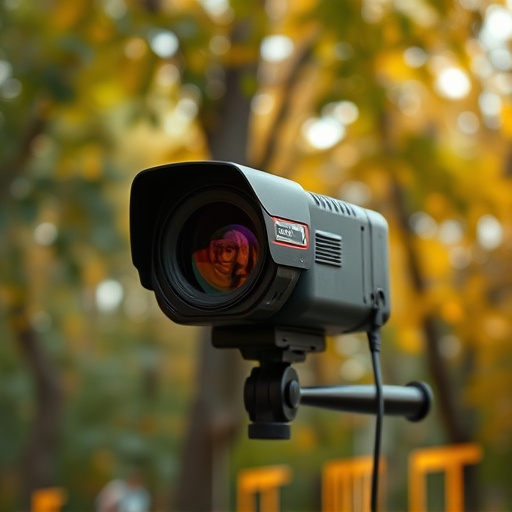Glint detection technology is vital for enhancing home security through hidden cameras, especially in low-light conditions. By identifying genuine objects and mitigating light reflections, these algorithms ensure only authentic activities are captured. This allows for strategic placement of hidden cameras in areas like windows, doors, or dark corners, providing comprehensive coverage while preserving privacy. Homeowners should proactively inspect their homes for hidden cameras by using natural light reflections and strategic lighting to disrupt camera angles, making it harder for unauthorized devices to capture images unnoticed.
In today’s digital age, home security has evolved beyond traditional locks and alarm systems. One emerging threat, often overlooked, is the presence of hidden cameras. This article delves into an innovative method for detecting camera lens glints at night, empowering homeowners to safeguard their privacy. We’ll explore techniques to identify these covert devices using light reflections and provide insights on the best positions to prevent unwanted surveillance, enhancing your home security significantly.
- Understanding Glint Detection for Night-Time Security
- Identifying Hidden Cameras in Your Home Using Light Reflections
- The Best Positions to Detect and Prevent Hidden Camera Glints
Understanding Glint Detection for Night-Time Security
Glint detection is a critical component of night-time security systems, designed to identify and mitigate unwanted light reflections that can compromise surveillance footage. Understanding how this technology works is essential for homeowners looking to enhance their home security, especially when considering the best hidden camera locations. By employing glint detection algorithms, security cameras can distinguish between genuine objects and transient glare, ensuring that only authentic activities are captured on film.
This method is particularly useful in low-light conditions where natural or artificial lighting sources can create misleading reflections. During the night, when shadows are longer and light levels are lower, hidden cameras must be able to discern between a person’s movements and random glints caused by nearby lamps or streetlights. Advanced glint detection algorithms analyze video frames at rapid speeds, identifying patterns that indicate consistent, human-like motion rather than fleeting light artifacts. This allows for the placement of hidden cameras in strategic locations around the home, such as windows, doors, or dark corners, providing comprehensive coverage without compromising privacy.
Identifying Hidden Cameras in Your Home Using Light Reflections
Identifying hidden cameras in your home can be a concern for many homeowners looking to ensure their privacy and home security. One effective method to uncover these devices is by examining light reflections. Hidden cameras often rely on infrared or other types of lighting to capture footage, leaving telltale glints or reflections in windows, mirrors, or shiny surfaces. By strategically placing a strong light source or using specialized equipment to detect these subtle glints, individuals can uncover cameras positioned in the best hidden camera locations within their homes—from peepholes and ceiling fans to wall outlets and electrical switches.
This technique requires keen observation and, sometimes, advanced tools like infrared cameras or reflective tape. By navigating around your home and checking for unusual reflections, you might just reveal a potential security risk. It’s an innovative way to maintain control over your personal space and peace of mind, ensuring that your best hidden camera locations remain unknown to unauthorized individuals seeking to invade your home security.
The Best Positions to Detect and Prevent Hidden Camera Glints
The optimal positions for detecting and preventing hidden camera glints are often overlooked aspects of home security. While many focus on securing entry points, cameras themselves can be covertly positioned in discrete areas to spy on individuals. To counter this, strategic placement is key. The best approach involves a thorough inspection of potential hiding spots—both inside and outside your property. Look for common locations like peepholes, door handles, window sills, ceiling corners, and even behind furniture or artwork. These areas often reflect light in peculiar ways, indicating the presence of covert cameras.
When securing your home, consider using reflective surfaces strategically to your advantage. For instance, placing mirrors in key spots can disrupt camera angles and make it harder for hidden lenses to capture clear images. Additionally, ensuring adequate lighting in these areas can further hinder potential glints, making it more challenging for unauthorized cameras to operate undetected.
Glint detection techniques, particularly during nighttime, offer a robust method for enhancing home security by identifying hidden cameras. By understanding how light reflects off camera lenses and strategically positioning sensors, homeowners can significantly reduce privacy risks associated with covert surveillance devices. The best hidden camera locations in your home are often where natural or artificial light sources create reflections, making it essential to inspect corners, window frames, and areas with bright lighting. Implementing these night-time glint detection methods is a proactive step towards safeguarding your personal space and peace of mind.
